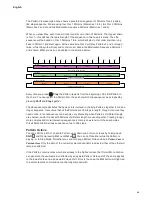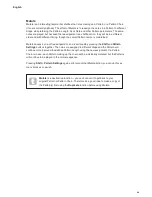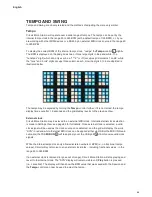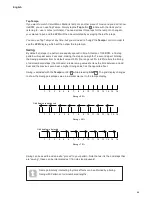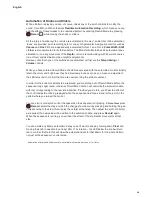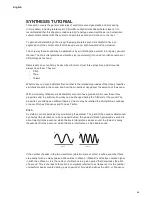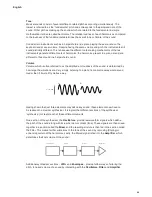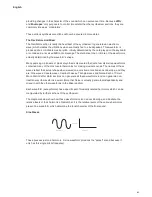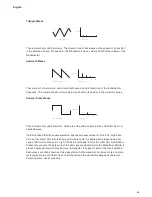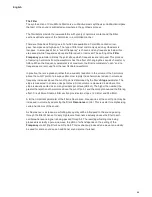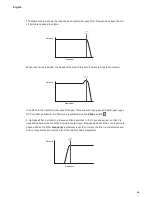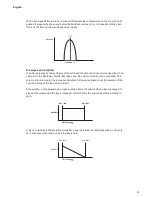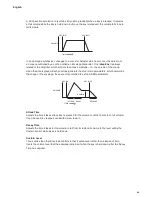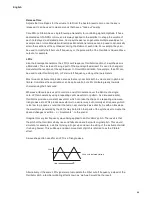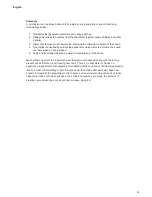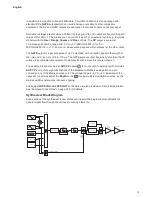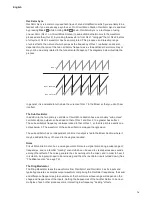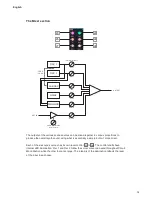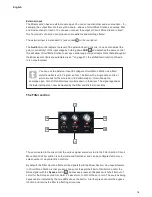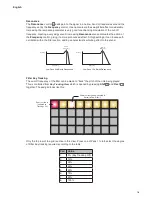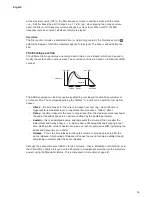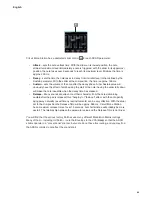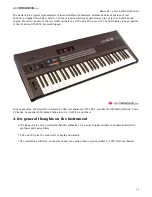
65
English
The Filter
The synth section of Circuit Mono Station is a subtractive music synthesiser. Subtractive implies
that part of the sound is subtracted somewhere in the synthesis process.
The Oscillators provide the raw waveforms with plenty of harmonic content and the Filter
section subtracts some of the harmonics in a controlled manner.
There are three basic filter types, all of which are available in Circuit Mono Station: low-
pass, band-pass and high-pass. The type of filter most commonly used on synthesisers is
low-pass. In a low-pass filter, a “cut-off frequency” is chosen and any frequencies below this
are passed, while frequencies above are filtered out, or removed. The setting of the
Filter
Frequency
parameter dictates the point above which frequencies are removed. This process
of removing harmonics from the waveforms has the effect of changing the sound’s character or
timbre. When the Frequency parameter is at maximum, the filter is completely “open” and no
frequencies are removed from the raw Oscillator waveforms.
In practice, there is a gradual (rather than a sudden) reduction in the volume of the harmonics
above the cut-off point of a low-pass filter. How rapidly these harmonics reduce in volume as
frequency increases above the cut-off point is determined by the filter’s
Slope
parameter. The
slope is measured in ‘volume units per octave’. Since volume is measured in decibels, this
slope is usually quoted as so many decibels per octave (dB/oct). The higher the number, the
greater the rejection of harmonics above the cut-off point, and the more pronounced the filtering
effect. Circuit Mono Station’s filter section provides two slopes, 12 dB/oct and 24 dB/oct.
A further important parameter of the filter is Resonance. Frequencies at the cut-off point may be
increased in volume by advancing the filter’s
Resonance
control. This is useful for emphasising
certain harmonics of the sound.
As Resonance is increased, a whistling-like quality will be introduced to the sound passing
through the filter. When set to very high levels, Resonance actually causes the filter to self-
oscillate whenever a signal is being passed through it. The resulting whistling tone being
produced is actually a pure sine wave, the pitch of which depends on the setting of the
Frequency
control (the filter’s cut-off point). This resonance-produced sine wave can actually
be used for some sounds as an additional sound source if wished.
Содержание Circuit Mono Station
Страница 1: ......
Страница 93: ...93 English...



